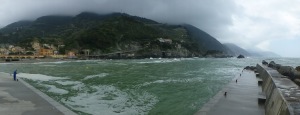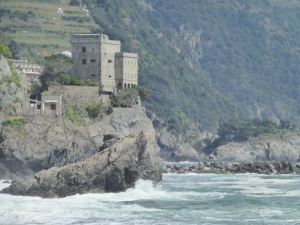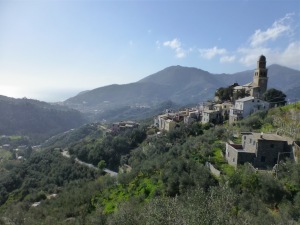The Ligurian Coast is possibly the most iconic coastlines in Italy. In addition to being incredibly scenic and beautiful, the Ligurian Coast is home to some incredibly complex and exciting geology. The Ligurian Coast is composed of the Maritime Alps in the west and the Ligurian Nappes of the Apennines in the east. Along this coast the north-northwest convergence of the Alpine orogeny gives way to the active east-northeast convergence along the Apennines. Within the Ligurian Nappes are some classic examples of continental margin ophiolites. These ophiolites consist of exhumed, subcontinental lithospheric mantle lherzolite directly overlain by basaltic pillow lavas. The ophiolites along the Ligurian Coast along with those examples in the Central Alps (discussed
here) were instrumental in shaping the early understanding of obducted oceanic crust.
Something that surprised me about the coastline in this region was how dramatic the relief so near the ocean. The mountains along this coast rocket out of the ocean over 1100 meters within 5 kilometers of the coast. This is greater than any of the peaks in the Scottish highlands (well known for their significant relief).
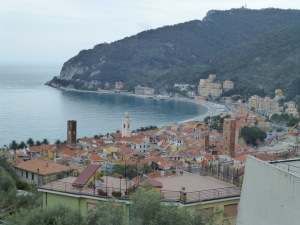 |
| The city of Noli |
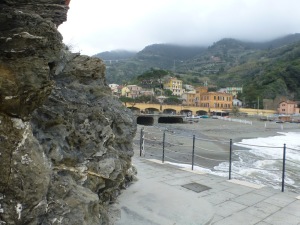 |
| Monterosso (the northernmost village of La Cinque Terre) |
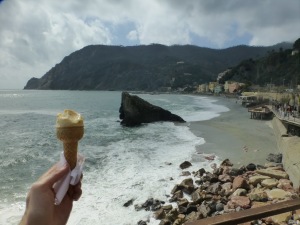 |
| Gelato in Liguria – Heaven |
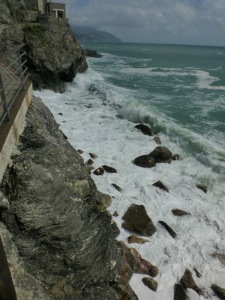 |
| Turbidite sea cliffs |
The ophiolites along the Ligurian coast are comprised of the Piemont-Liguria oceanic crust. This ocean basin was a former piece of oceanic crust associated with the Tethys Ocean. Fragments of Piemont-Ligurian oceanic crust are also preserved in the Penninic nappes of the Alps and the Tuscan nappes of the Apennines.
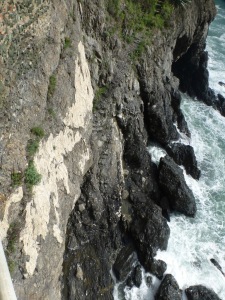 |
| Quartz slickensides in the serpentinite melange |
 This work is licensed under a Creative Commons Attribution-NonCommercial-ShareAlike 4.0 International License.
This work is licensed under a Creative Commons Attribution-NonCommercial-ShareAlike 4.0 International License.





![]() This work is licensed under a Creative Commons Attribution-NonCommercial-ShareAlike 4.0 International License.
This work is licensed under a Creative Commons Attribution-NonCommercial-ShareAlike 4.0 International License.
